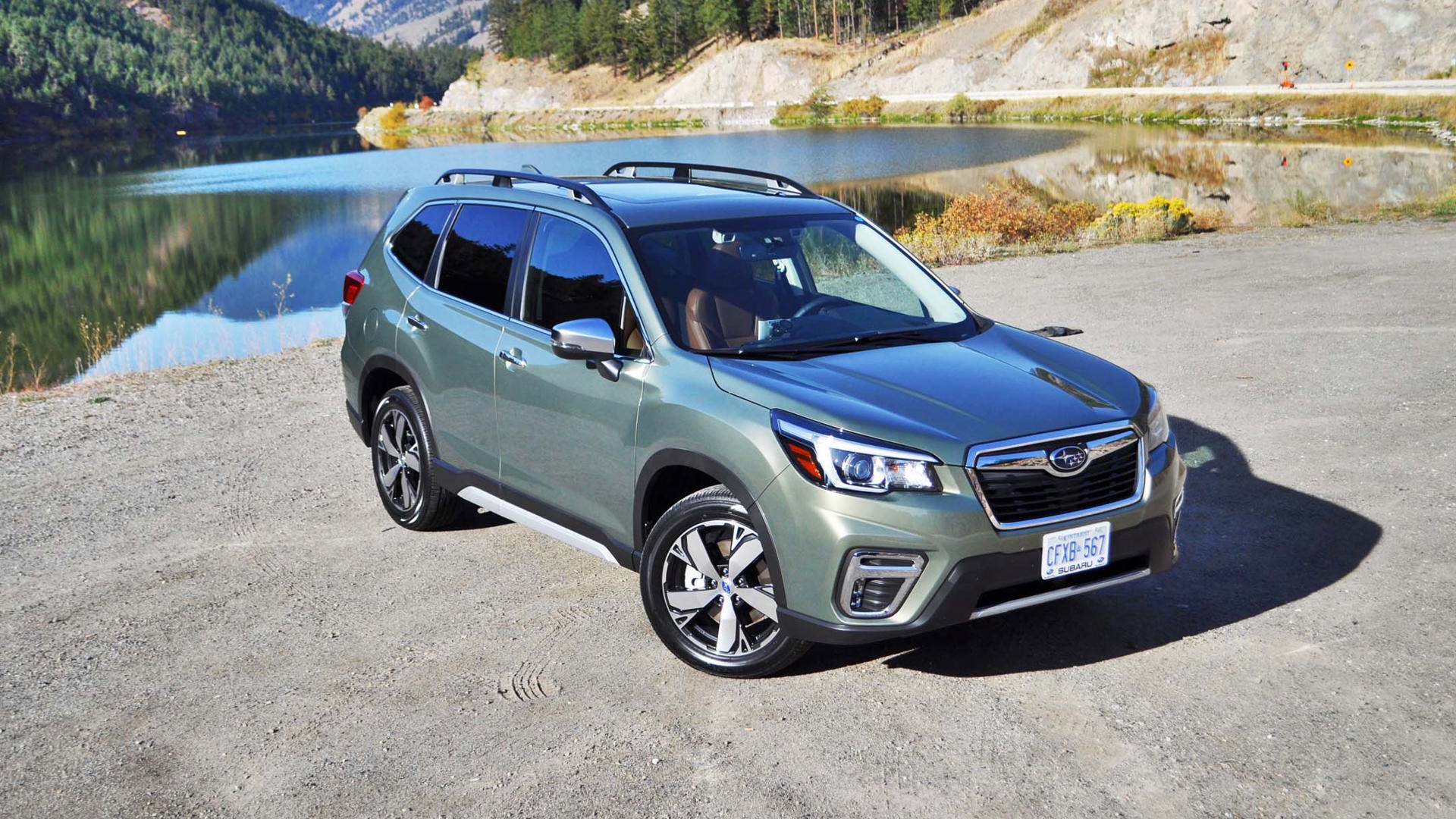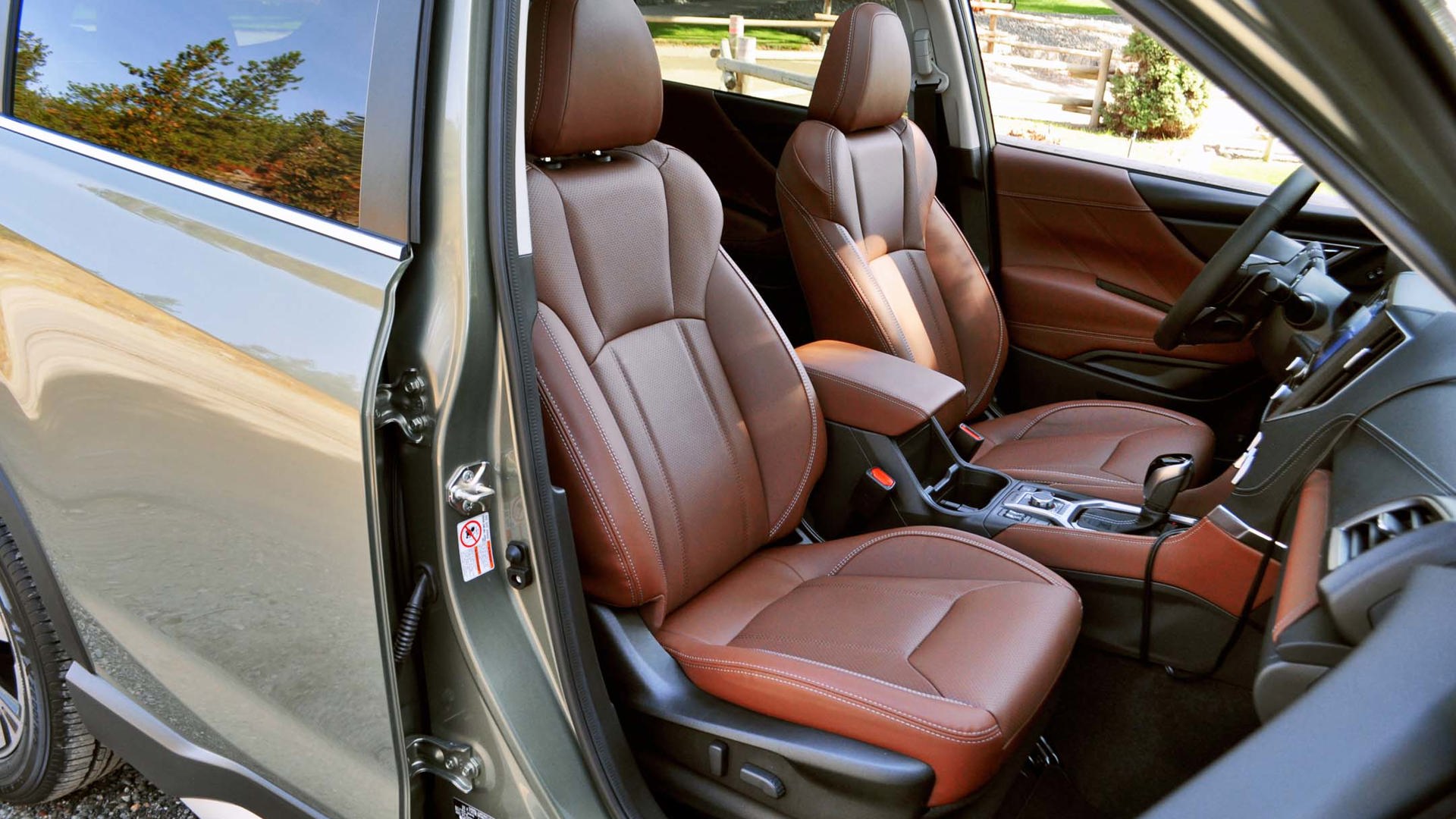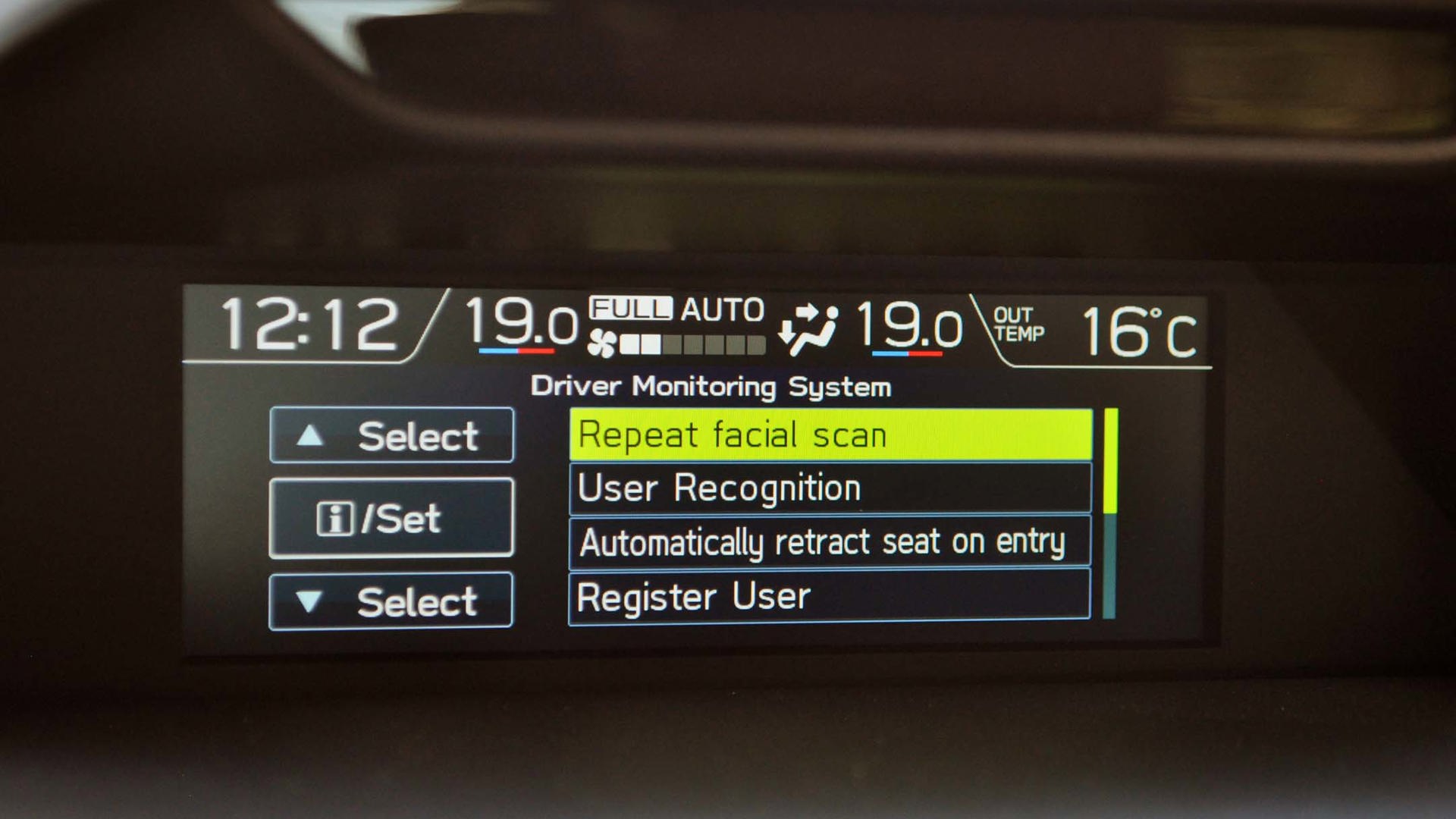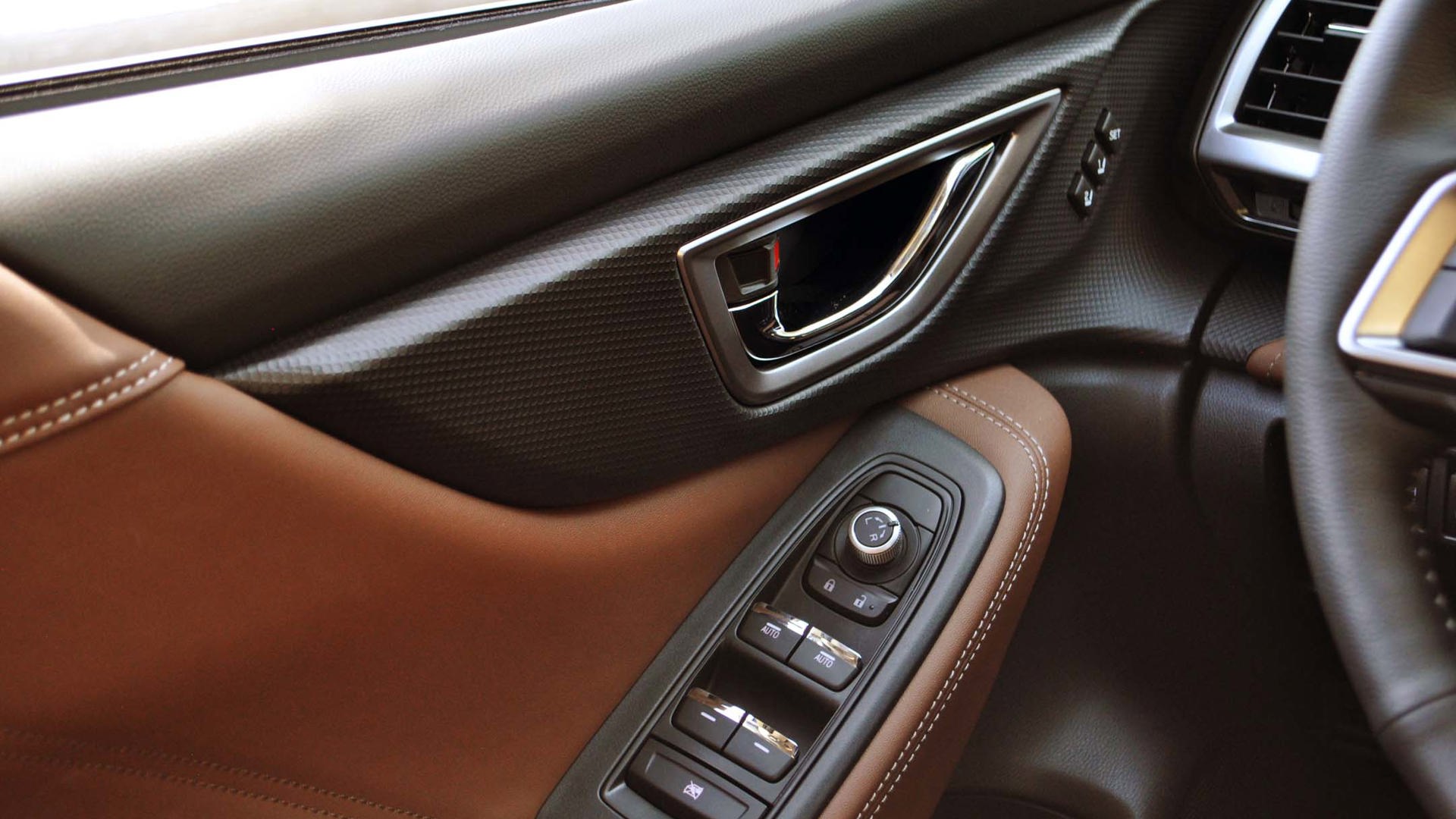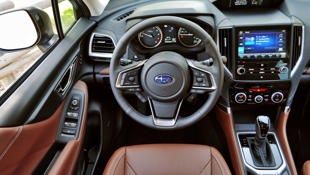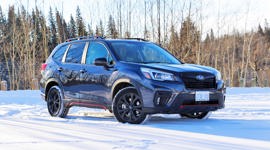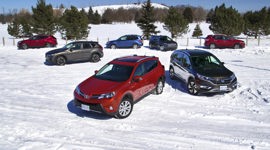OSOYOOS, BC – The outgoing Subaru Forester was one of the few compact SUVs that put true sport into its sport-utility, with its available manual transmission and especially with the playfully powerful XT turbocharged model. Think turbo WRX power in an all-grown up cubic crossover that valiantly hid its wild-child side under a cloak of all-wheel drive respectability.
For the majority of compact crossover buyers, the 2019 Subaru Forester will offer more of what they desire most.
But both the manual transmission and the turbocharged engine are no more in this all-new generation 2019 Forester, sacrificed to the gods of fewer manual drivers and weak market penetration, both in Canada but especially in the US. Interestingly, Subaru Canada folks at the launch of this fifth generation ’19 Forester in southern BC wine country noted that the turbocharged model accounted for a far higher proportion of Canadian sales (15 percent) than in the US (5 percent).
Could this foreshadow the potential return of a turbocharged model to North America, perhaps even as a Canadian exclusive?
Send those pleading emails/DMs/dealer deposits if you must, but chances don’t look good.
Sure, Canada is now Subaru’s third-largest market globally, behind Japan and the US. But Subaru’s corporate HQ in Japan hasn’t shown a propensity to regularly tailor unique engines for Canada. Or seem hugely interested in updating or expanding its unique turbocharged flat-four technology at all actually, with the WRX and STi versions of the Impreza still languishing on an older platform, and no turbo in sight for the wonderfully balanced but still naturally aspirated BRZ two-door rear-wheel-drive coupe.
New Sport enters the fray
The company just started delivering the first new 2019 Forester models in Canada in September, rolling out across the country this fall. It’s a key launch for the Japanese company, as the Forester is Subaru Canada’s best-selling model, in a market where trucks and utility vehicles already make up just over two thirds of all new-vehicle sales, said Ted Lalka, vice president of product planning at the vehicle’s launch.
“That’s an unprecedented shift in the last few years,” he noted, and one he and market watchers foresee growing to closer to 80 percent in the next few years.
Yet despite dropping the manual transmission and turbocharged engine, there will be a new Sport version of the 2019 Forester on offer, which will use the same engine and more-composed suspension of all the other models, distinguishing itself mostly with its unique orange trim inside and out, which remain orange no matter what exterior or interior hue one selects. Also unlike the previous XT Turbo, this new Sport model will be more of a mid-level trim, its $34,995 price slotting it north of the base 2.5’s $27,995 starting price, but below the similarly new top Premier trim, which runs for $39,495.
We split a full day of on- and a little off-road testing in both the Sport and Premier, and outside of a more aggressive Sport# mode to the continuously variable transmission (CVT) – which executed the “shifts” from the shift paddles quicker and in a more defined manner – there’s really not much of a dynamic difference between the Sport and the Premier.
But those orange accents on the lower body panels, rear apron, and roof rails make the Forester Sport very easy to spot, with a unique blacked-out grille, while its black wheels are dark metallic versions of the 18-inch wheels that come with the one-up Limited model ($37,695). Inside, orange stitching and trim pieces give the Sport’s interior a jauntier feel the company believes will appeal to younger buyers, while notable equipment upgrades include an eight-inch touchscreen, and dual rear USB ports, along with reclining rear seats.
So it’s fair to suggest the new Sport is more a flashier trim package than a unique new model. But it will clearly be more accessible to more buyers, price-wise and fuel-efficiency-wise, as well as include all of the other benefits of this all-new Forester.
New engine and platform
All models now receive a new 2.5-litre flat-four engine, a staple under Subaru hoods, and now features direct injection for a 12 hp increase, up to 182 hp at 5,800 rpm. Torque is up only slightly at 176 lb-ft, but kicks in at a lower and more usable 4,400 rpm.
This engine won’t set your hair on fire if you floor it from a stop, but neither will it disappoint you from a power or refinement standpoint, even if you’re climbing out of a turbocharged rival such as the Honda CR-V or the Canadian-built market heavyweight Toyota RAV4. And no need for premium in this engine.
This engine has been tuned for extra fuel efficiency as well, with its ratings of 9.0 L/100 km city, 7.2 highway and 8.2 overall coming in right around where the most fuel-efficient AWD CR-V lands – though Honda does offer a front-drive CR-V, unlike the Forester – and all RAV4 AWD models. On the road, we saw a rating for the Forester Premier at 8.8 L/100 km.
On the other hand, if ultimate fuel efficiency in your compact SUV is the goal, the RAV4 does offer a popular Hybrid version that comes only in all-wheel drive, and is officially listed at 7.3 L/100 km.
The quiet and subdued ambiance of the new Forester also takes some credit from the new platform it rides on, which is 40 percent stiffer than before, which helps make both the ride more comfortable, and the handling less likely to scrape the door handles on highway ramps. The Forester’s notable body roll was an unfortunate trait of the outgoing version, which we noted in our massive 2017 roundup of $40,000-ish compact SUVs, but where the Forester XT still finished in a podium spot.
Interior brings high-tech goodies
In addition to the standard symmetrical all-wheel drive that comes on all Foresters, which may make it seem pricier than some rivals like the ones noted above if all you look at is base prices, the Forester’s interior continues to bring the spacious feel and great outward visibility brought on by its tall windows, slightly larger dimensions all around, and space-efficient if somewhat square-ish body.
The base $27,995 2.5i model also comes standard with heated front seats, automatic climate control, Apple CarPlay/Android Auto, and a new X-Mode setting for the AWD system that allows you to toggle from a setting from mild to deep snow and mud, the latter allowing more wheel slip to combine with the Forester’s 8.7-inch ground clearance to help you power out of tougher conditions.
Moving up to the Convenience package adds larger 17-inch wheels, power driver’s seat, paddle shifters, dual-zone climate controls, and a rear spoiler to sharpen up the looks. Subaru’s well-regarded EyeSight suite of safety features – adaptive cruise, lane-keep assist, pre-collision braking, lane-departure warning, and automatic reverse emergency braking – is a $1,500 option here, and also includes a proximity key and push-button start. All those niceties come standard in the $32,995 Touring model, which also includes a large sunroof as well as a power rear tailgate.
Disappointingly, even at the top trim levels, the Forester’s power tailgate doesn’t include a hands-free activation function. But that cargo area is now wider than before, and even wider than Subaru’s similarly new Ascent seven-seater, while the tailgate’s moving time has been shaved down to five seconds from a lengthier 9.2.
The $37,695 Limited offers niceties such as leather, heated steering wheel and heated rear seats, but it’s only the $41,220 top-line Premier trim (after the $1,725 freight/PDI charge applicable to all these prices) that receives the lovely brown leather that ensconced our upscale surroundings for much our time with it. This is also the only model to offer Subaru’s new DriverFocus Distraction Mitigation System, which reads the angles of your face to not only identify you, but to also beep at you when it senses your faces angles are not looking at the road.
It beeped at us a few times when looking at the passenger or sometimes when checking your blind spot, even when paying attention, so there’s a potential annoyance factor there that led Subaru to include an off button for it. What may be most appealing about the system is that once you register your face in the system, it can automatically recognize up to five people, and move their seat and mirror position instantly upon turning on the car, without having to remember which of the two memory seat positions are yours.
Speaking of safety system shenanigans, we noticed the lane-departure warnings on our clear test day normally beeped at us if we strayed over a solid white or yellow line – but not always – but it very rarely beeped at us when crossing a line in a curve, which seems even more important from a safety perspective. Also, we did notice a few ungainly wires between the driver’s side rear-view mirror and its exterior housing, made noticeable in a large gap that wasn’t present on the passenger side mirror.
The blind-spot detection system on both sides worked fine, so may not be a quality issue as much as a fit and finish one there, though I do tend to point my driver’s mirror well out from the side of the car to help eliminate blind spots. But the two flaws together seemed somewhat surprising, given Subaru’s stellar reliability, resale, and safety reputation.
More mainstream, yet more impressive
Subaru has aimed its products at a more mainstream audience, its vehicles no longer nearly as “quirky” as suggested by previous options like a fire-breathing turbo or a manual transmission on a small SUV. Some may say this takes away some of the Forester’s unique charm as a free-spirited option in a sea of same-y tall AWD hatchbacks.
But for the majority of compact crossover buyers, the 2019 Subaru Forester will offer more of what they desire most: space, comfort, fuel efficiency, safety, and a refined overall driving experience. If Subaru combines continued reliability with the new Forester, this fifth generation Forester looks ready to once again challenge for top spot on the podium of our next compact SUV shootout.
